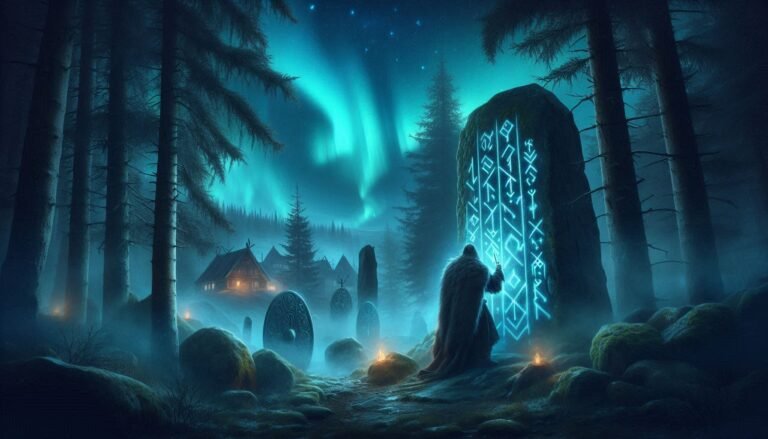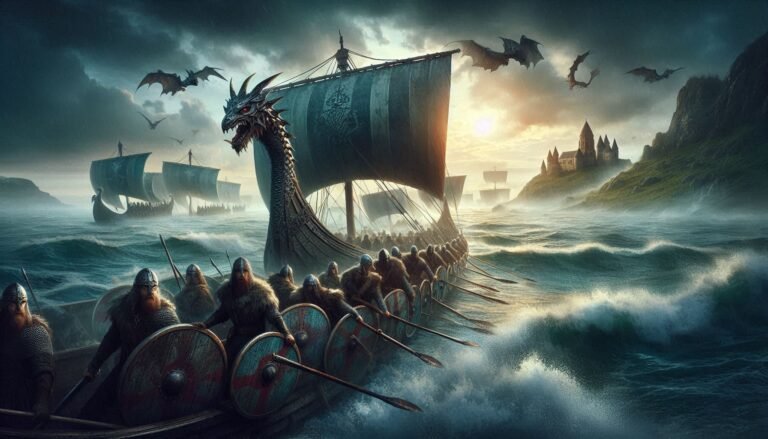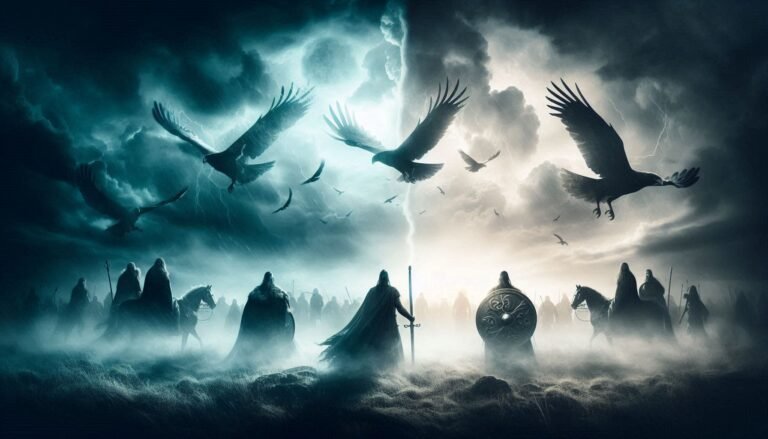The Vikings have long been portrayed as brutal, axe-wielding warriors who raided and pillaged their way across Europe. But how much of their fearsome reputation is based on reality, and how much is exaggerated legend? The truth is that Viking warriors were not just mindless raiders but also skilled navigators, traders, and tacticians who left a profound impact on history.
In this article, we’ll uncover the truth about Viking warriors, exploring their training, weapons, battle strategies, and cultural significance. We’ll separate myth from reality and reveal why the Vikings continue to capture the imagination of historians and storytellers alike.
Who Were the Vikings?
The Vikings were seafaring Norse people from Scandinavia (modern-day Norway, Sweden, and Denmark) who lived between the 8th and 11th centuries. While they are most famous for their raids, Vikings were also farmers, traders, and explorers who established settlements across Europe, the British Isles, and even North America.
Their warrior culture was deeply embedded in Norse society. Unlike standing armies in medieval Europe, Viking warriors were not full-time soldiers but rather free men who took up arms when necessary. They fought to defend their land, seek wealth, and gain honor in battle.
The Making of a Viking Warrior
Training and Warrior Culture
Unlike medieval knights, Viking warriors did not undergo a formal training system. Instead, they learned through:
- Hunting and Farming: Viking boys honed their strength, endurance, and survival skills by hunting and working the land.
- Combat Practice: Young men trained with swords, axes, and spears, often sparring with family members.
- Raiding Experience: Many warriors gained real-world combat experience by participating in raids.
Viking warriors followed a code of honor, placing great importance on courage, loyalty, and reputation. Dying in battle was seen as the greatest honor, as it ensured entry into Valhalla, the warrior’s paradise ruled by Odin.
The Berserkers: Viking Super Warriors
One of the most feared types of Viking warriors was the Berserker. These warriors were said to fight in a trance-like fury, feeling no pain and possessing superhuman strength. Some historians believe they may have used hallucinogenic mushrooms or performed rituals to enter this frenzied state.
Berserkers often wore animal pelts (bear or wolf skins) instead of armor, believing they could channel the power of these creatures in battle.
Weapons and Armor: The Tools of War
Viking warriors were well-equipped for battle, carrying a variety of weapons and armor suited for both offense and defense.
Primary Weapons
- Swords: Viking swords were highly prized, often made of pattern-welded steel. They were symbols of wealth and status, with intricate designs and inscriptions.
- Axes: The Dane axe was a fearsome weapon with a long handle, capable of splitting shields and helmets.
- Spears: The most common weapon, spears were versatile and could be used for both thrusting and throwing.
- Bows and Arrows: Vikings were skilled archers and used bows for hunting and warfare.
Armor and Shields
- Chainmail: Viking elites wore chainmail shirts, offering excellent protection.
- Helmets: Most Viking helmets were simple, rounded iron caps. The famous “horned helmet” is a myth, created by 19th-century artists.
- Shields: Round wooden shields were a Viking warrior’s primary defense. They were often painted with clan symbols and used in formation tactics.
Battle Tactics and Strategies
1. The Shield Wall Formation
One of the Vikings’ most effective battlefield strategies was the shield wall. Warriors would stand shoulder to shoulder, interlocking their shields to form a solid wall of protection.
- The front line absorbed enemy attacks while the warriors behind thrust spears or axes through gaps.
- This formation was highly effective against cavalry and infantry charges.
2. Hit-and-Run Raids
Vikings perfected the art of the raid, striking coastal villages and monasteries with lightning-fast attacks before retreating.
- Their longships allowed them to navigate both oceans and rivers, reaching deep into enemy territory.
- They avoided prolonged battles, using speed and surprise to overwhelm their opponents.
3. Psychological Warfare
Vikings used their reputation for ferocity and brutality to their advantage.
- They often burned villages and left survivors to spread fear.
- Berserkers and warriors howled and beat their shields to intimidate enemies before battle.
4. Naval Superiority
Vikings were exceptional sailors and used their advanced ship designs for both war and exploration.
- Their longships were fast, agile, and capable of beaching on shorelines, allowing for rapid deployment.
- Viking fleets often outmaneuvered enemy ships, striking before defenders could react.
Famous Viking Warriors and Leaders
1. Ragnar Lothbrok
A legendary Viking king and warrior, Ragnar’s raids on England and France made him famous. Though many of his exploits are mythologized, he is credited with pioneering successful Viking raids into Western Europe.
2. Bjorn Ironside
The son of Ragnar Lothbrok, Bjorn was a skilled warrior and explorer. He is believed to have led raids into the Mediterranean, attacking cities in Italy and North Africa.
3. Ivar the Boneless
A feared warrior and brilliant tactician, Ivar led the Great Heathen Army that invaded England in 865 CE. Despite his name, he was ruthless in battle and played a key role in Viking expansion.
4. Harald Hardrada
Often called “the last Viking,” Harald was a warrior-king who fought across Europe, Byzantium, and England. He died in 1066 at the Battle of Stamford Bridge, marking the end of the Viking Age.
The Viking Warrior Legacy
The Viking warriors left a lasting impact on history, influencing European warfare, exploration, and culture. Their reputation as fearsome warriors was well-earned, but they were also skilled strategists, traders, and adventurers.
Influence on Modern Warfare
- The shield wall tactic was later used by medieval knights and even modern riot police.
- Their hit-and-run tactics inspired guerrilla warfare strategies.
- Their naval innovations influenced shipbuilding for centuries.
Pop Culture and Viking Warriors
- Viking warriors are depicted in movies, TV shows, and video games, including Vikings, Assassin’s Creed: Valhalla, and The Northman.
- The Viking warrior ethos of bravery and exploration continues to inspire martial arts, sports, and leadership philosophies.
More Than Just Barbarians
While Vikings earned their fearsome reputation through warfare and raids, they were far more than just brutal warriors. They were pioneers, explorers, and tacticians who shaped the course of history. Their legacy endures not only in history books and archaeological sites but also in the very spirit of adventure and resilience that defines their legend.
The Viking warrior may be a figure of the past, but their legend will live forever.



